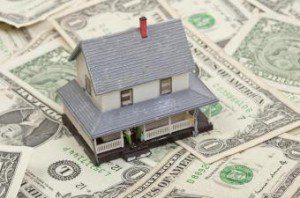 A new study by NerdWallet [1], which looked at three years worth of data from Realtor.com [2] on 20 U.S. metro markets, found that the smaller the home, the faster the price growth, in terms of percentage of increase. However, overall prices of larger homes climbed faster than those of small homes in terms of actual dollars over the same period from 2013 to 2016.
A new study by NerdWallet [1], which looked at three years worth of data from Realtor.com [2] on 20 U.S. metro markets, found that the smaller the home, the faster the price growth, in terms of percentage of increase. However, overall prices of larger homes climbed faster than those of small homes in terms of actual dollars over the same period from 2013 to 2016.
In 17 of the 20 metro areas, NerdWallet found that listing prices of the smallest 25 percent of homes by area grew fastest when calculated as a percentage. The median annual growth rate for these homes was 9 percent. The second-smallest 25 percent of homes had the second-fastest growth rate, with median annual growth of 7.4 percent.
In most metros, the dynamic held true that the smaller the home, the faster the price value increased. In a few, like Dallas/Fort Worth, the second-smallest quarter saw values rise just a hair more than those of the smallest. Typically, the escalations were close and evenly downward, going from smallest to largest homes. However, Miami’s smallest homes grew far faster than all other sizes. Homes there grew by 20 percent over three years. Tampa had a similar return, with the smallest homes growing 16.6 percent.
In pure dollars, the value of the largest homes were more than those of smaller ones, which NerdWallet credited to the simple fact that larger homes in any market tend to have the highest price tags. Over its three-year window, the study found that the smallest homes in the metro areas appreciated more than $57,000, on average; the largest homes saw their prices rise almost $100,000, on average.
Richard Green, a professor and chair of the Lusk Center for Real Estate at the University of Southern California, said the numbers don’t surprise him.
“We’ve had this now for about nine to 10 years, this return to center cities,” Green said, adding that homes in the center of big cities tend to be smaller than those in suburbs.
Green also said that new construction has been down nationwide since 2007, one reason inventory in general is low. Then, of course, there are the people who bought starter homes between 2004 and 2006 and haven’t recovered all the value they lost during the housing crisis.
“They haven’t built up the equity that normally people would use for a down payment in order to move up, so you have a lot of people who are stuck in their starter homes,” Green said.
While home prices are going up, he said, they’re not high enough to get people to leave their starter homes except in a few markets, such as Denver and Dallas. As a result, there often aren’t enough starter homes on the market to meet demand, meaning the lack of inventory, paired with increased demand, means more price appreciation for smaller homes.
To read the full report, click here [3].